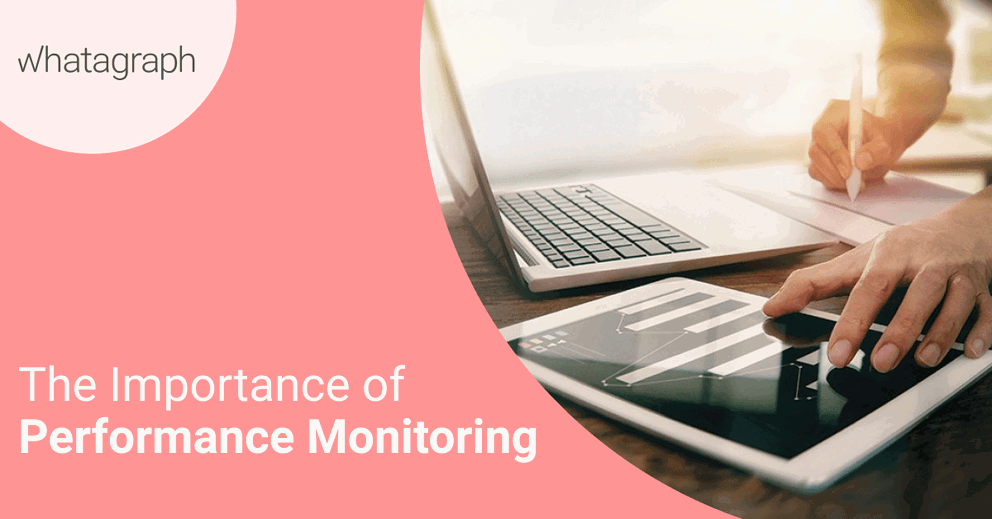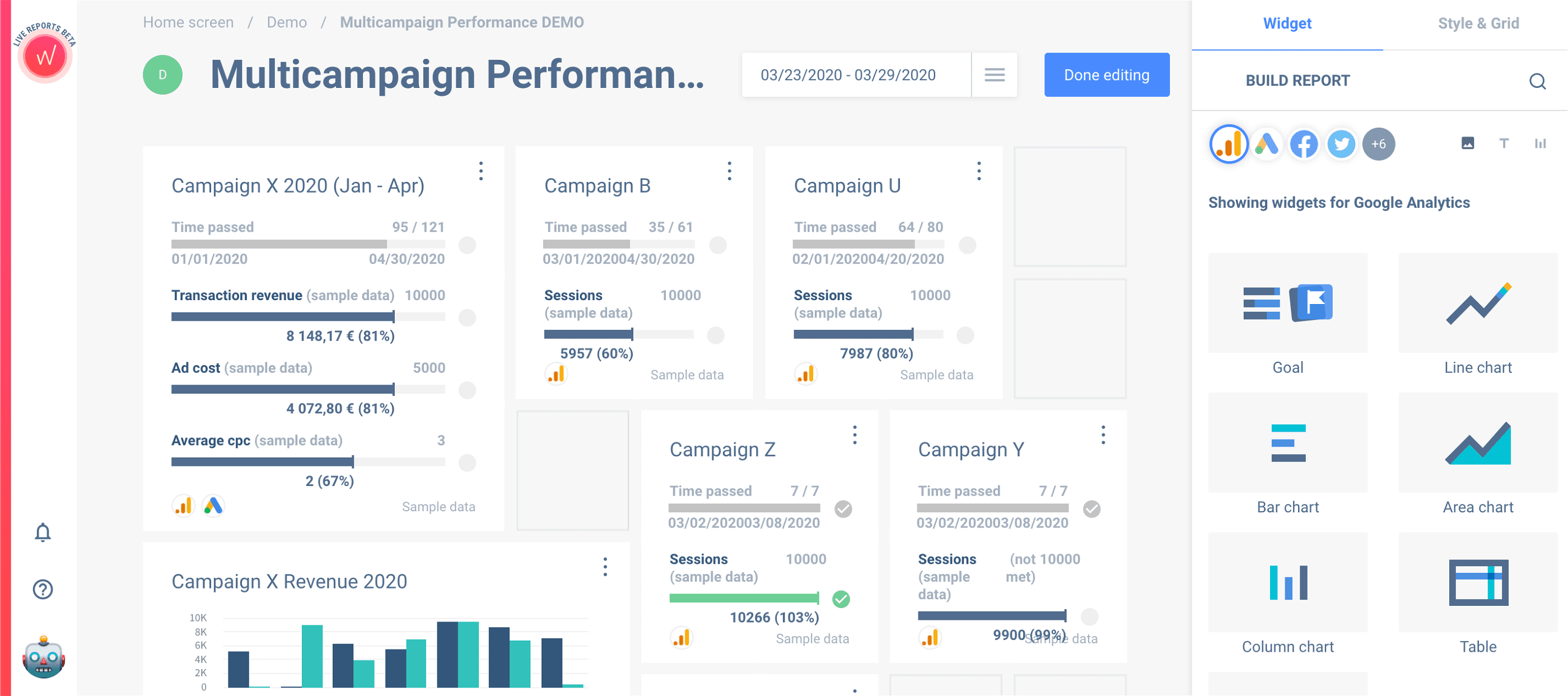The Importance of Performance Monitoring
In order to understand the basis, functionality, optimization, and all the little details of the application performance monitoring system, you will need to dig a little deeper. If you want to get a clue of how flawless digital experience is put into practice, stay tuned.

Apr 04 2020●3 min read

What is Performance Monitoring?
Monitoring or tracking and verifying how well digital platforms and channels are performing is one of the most important parts of web analytics. And that is precisely what performance monitoring is - a combination of tools and processes that check how well a certain digital business is running.
While tools such as Whatagraph are often used to check the performance of multiple marketing channels with customized live reports, this can also help you to track where your app/website has a leak.
The analysis itself goes into great depth, monitoring, and measuring multiple channels performance. Below is an example of a Whatagraph live report.

Why Is Performance Monitoring Important?
Digital evolution is progressing really fast, and so are the end-users expectations. Having a slow website or app could result in making the consumers unsatisfied and even switch to another brand.
This will immediately impact profit, client retention, and prevent business stagnation. Regardless of the platform in question, the user experience, great performance, and success of a business are interdependent.
Furthermore, in order to go neck to neck with competitors, within IT environments certain standards should be met. IT teams, managers and developers should be able to use various performance monitoring system solutions to tweak the app performance which in terms improves the business performance.
A high-quality performance monitoring system will not only detect the problems but be able to precisely pinpoint the spot where and when the user encountered a problem. And once again, regardless of the complexity of the app environment, the customers will still expect the app to function impeccably.
What Causes the Slowdowns?
Many of you might wonder why your app is slow, and surely, it is one of the toughest questions. One second delay might not sound so terrible, but it can lead to significant conversion reduction as well as customer defection.
A great monitoring strategy might help get accurate performance metrics and get to the root of troubleshooting, even if the app’s infrastructure is complex.
The right question to ask is why and how long the users experienced the latency in your app, and also what is causing it. Having insight into various elements of user experience, app performance, transactions, and also the state of the app's infrastructure might help discover the problem.
Finally, the best approach would be trying to access the issue having in mind both the apps infrastructure and the user’s experience. And the answer lies in measuring the nature of transactions, response time, and availability.
What Exactly Does APM Measures?
As far as APM is concerned, we already discussed that it monitors the overall app functioning, it collects relevant information about any issues and notifies us about those problems. These are usually some bugs that are directly impacting the business itself.
And the most important elements being monitored are:
- Application availability;
- Error rates;
- Response time;
- User experience;
- Request rates;
- Garbage collection;
- CPU usage;
- Number of instances.
What Should an APM Strategy Ideally Consist of?
There are a couple of basic things that every APM strategy should consist of. First of all, it should focus on the overall and continuous app user experience (even when no bugs and slowdowns are experienced).
The second important part of an APM strategy is transaction profiling, which includes inspecting the business transaction flow.
Among other important parts of such a strategy is definitely the application code-level diagnostics to discover any potential code errors. Moreover, app in-depth analysis might help hunt down the application infrastructure problems, and we could add Infrastructure monitoring to the APM strategy as well.
These might pinpoint the troubleshoot caused by server issues, slow network connectivity, storage hotspots that are in the red, and more.
FAQ:
What is Performance Monitoring?
It is a process of quality assurance but instead of relying on a whole team of people to do it, any member of c-suite is equipped with relevant tools that enable continuous performance monitoring of an app, software or an online platform.
What are the types of monitoring?
- Process monitoring;
- Assumption monitoring;
- Technical monitoring;
- Sales or Financial Monitoring;
- Impact or User engagement Monitoring;
- References.

WRITTEN BY
Gintaras BaltusevičiusGintaras is an experienced marketing professional who is always eager to explore the most up-to-date issues in data marketing. Having worked as an SEO manager at several companies, he's a valuable addition to the Whatagraph writers' pool.